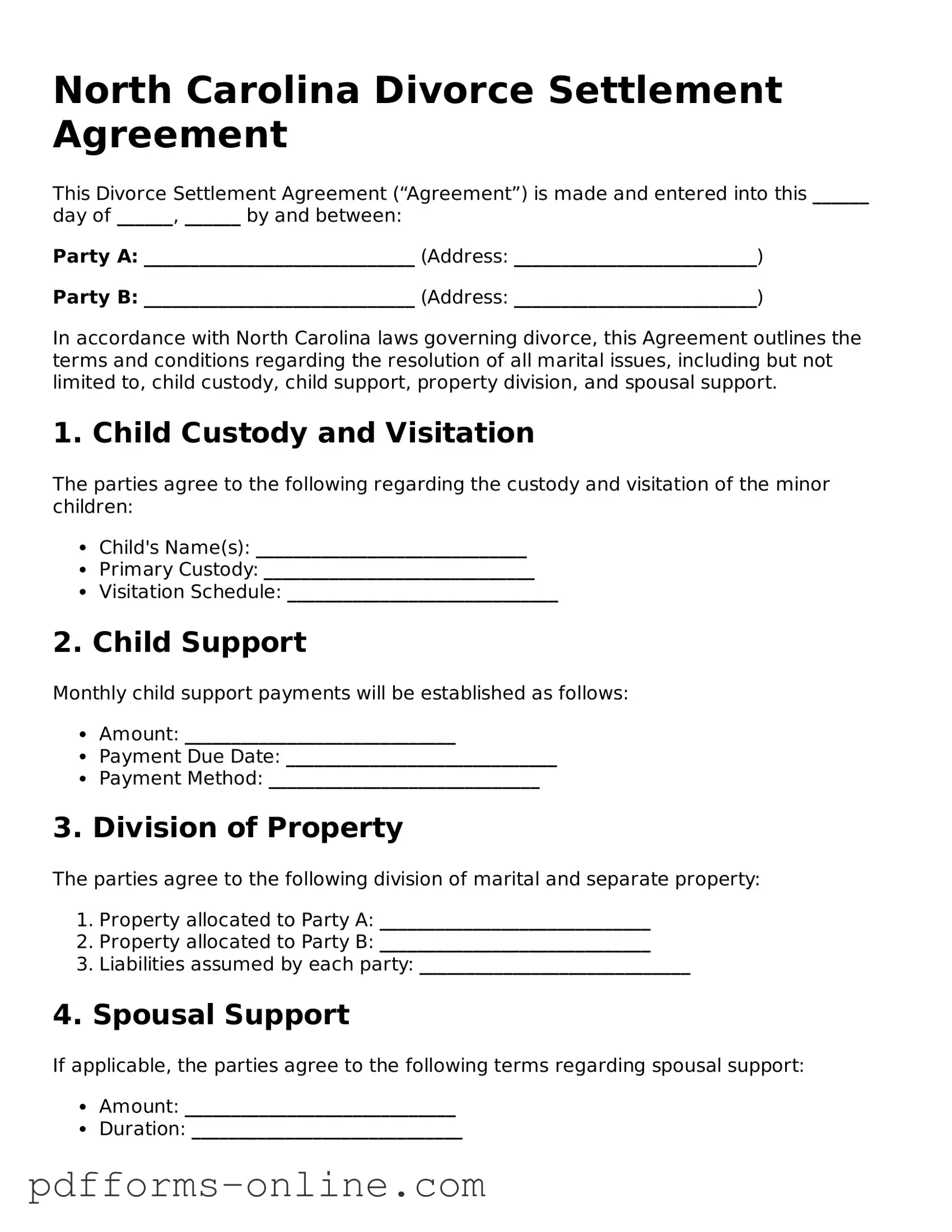North Carolina Divorce Settlement Agreement
This Divorce Settlement Agreement (“Agreement”) is made and entered into this ______ day of ______, ______ by and between:
Party A: _____________________________ (Address: __________________________)
Party B: _____________________________ (Address: __________________________)
In accordance with North Carolina laws governing divorce, this Agreement outlines the terms and conditions regarding the resolution of all marital issues, including but not limited to, child custody, child support, property division, and spousal support.
1. Child Custody and Visitation
The parties agree to the following regarding the custody and visitation of the minor children:
- Child's Name(s): _____________________________
- Primary Custody: _____________________________
- Visitation Schedule: _____________________________
2. Child Support
Monthly child support payments will be established as follows:
- Amount: _____________________________
- Payment Due Date: _____________________________
- Payment Method: _____________________________
3. Division of Property
The parties agree to the following division of marital and separate property:
- Property allocated to Party A: _____________________________
- Property allocated to Party B: _____________________________
- Liabilities assumed by each party: _____________________________
4. Spousal Support
If applicable, the parties agree to the following terms regarding spousal support:
- Amount: _____________________________
- Duration: _____________________________
5. General Provisions
Both parties agree to the following general provisions:
- This Agreement shall be binding upon the parties and may only be modified in writing.
- Each party has had the opportunity to seek independent legal advice.
- This Agreement reflects the complete understanding of the parties.
IN WITNESS WHEREOF, the parties have executed this Divorce Settlement Agreement on the date first above written.
Party A Signature: _______________________________ Date: __________________________
Party B Signature: _______________________________ Date: __________________________
